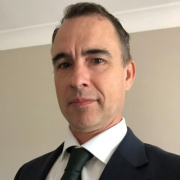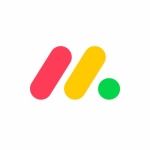What is our primary use case?
For the most part, we're doing some asset management with it. We've got about nine departments that are handling their ticketing requests through it through our service catalog. We use it for workflow building and integrations within as well.
How has it helped my organization?
As far as organizing the ticketing between departments and the analytics, we can draw from the different types of tickets that we have across our catalog.
The analytic aspect of it is fairly good. It's broken down pretty much on an agent-per-agent basis and even within groups as well.
It's pretty versatile in that regard.
What is most valuable?
Depending on the size of your organization, is pretty standard and useful. It's really dependent on the size of your organization. For example, in our use case, we're about 5,000 employees right now, and we've outgrown the product at this point.
What needs improvement?
The only thing I would have against it right now is that the workflow automation is not as granular as we would like it to be, at least for the size of our organization.
The round robin ticketing feature that they have is not ideal, especially in the cases of, for example, if you have multiple groups and there are similar users in different groups. If the round robin-ing feature is turned on at any point for that user, depending on the workflow automation, the ticketing will just go to that user instead of going to a particular group. It's not as accurate as it should be.
When we have new hires that come in, we have a new hire ticket that comes in from our HR department that comes into the IT department so that we can start preparing the equipment and getting the credentials ready. And then, once we create credentials, we need to send that over to an onboarding department that then provides the credentials to the end user and onboards them the day of.
Now for all those tickets, we're talking about two or three tickets by the time we have to ship equipment. Since we have to ship equipment too during Covid, by the time we have those three tickets created, we need to have one group that encompasses everybody that would be involved in that whole procedure so that we'd be able to all have visibility within those tickets. Otherwise, I can't see HR tickets based on the group rules we have set up. HR can't see our IT tickets.
There was a level of security in place there. We had to create a group that encompassed everybody. The problem there was that since the IT department has a round robin-ing feature set up so that when tickets come in, they're auto-assigned to us, all the tickets that were created within that group that we created to encompass everybody were just coming directly to us, which didn't make sense.
We had to have the ticket initially come into our team, basically, and then we'd have to reroute the ticket. It was just a whole added process and it just became overly frustrating. That's part of the reason why we're moving away from the platform.
For how long have I used the solution?
I've been using the solution for about four years now.
What do I think about the stability of the solution?
The stability is pretty solid. We've never had major outages or any workflow issues that weren't caused by an administrative error. It's been pretty stable as far as a ticketing platform is concerned.
What do I think about the scalability of the solution?
The solution is scalable. However, it depends on how many users you have within your environment. Right now, we have 4,000 users.
We are planning to move away from the solution and therefore will not increase usage. We're downgrading it pretty much to an archiving feature by year's end.
How are customer service and support?
I've only used them a couple of times. However, in every case that they've helped me out with, they've been very professional, and they've helped me resolve the issues.
I haven't really had to use them. That's indicative of their service to begin with.
How would you rate customer service and support?
Which solution did I use previously and why did I switch?
We were using Jira prior to FreshService. They moved away from it in favor of Freshservice, and now we're moving into ServiceNow.
For Jira, the number of users that we currently had at the time didn't necessitate the number of licenses we were going to need. Now we're at the point where we've got probably about 102 agents within Freshservice and it's not that it's quite costly, however, we need something a little bit more robust at this point.
How was the initial setup?
I wasn't there when they did the initial implementation. They actually implemented it about four months prior to when I started with the company.
That said, for the most part, myself and one other person have been predominantly managing the entire administration of the deployment since. I've mostly been managing it on my own for about a year and a half now.
From what I understand and what I've seen as far as the backend is concerned, it was simply just a matter of tying it in via API with our active directory. We have pretty much an auto-visioning feature that was happening with Active Directory until we implemented Okta as an IDP. We now push the group from AD into Okta, which then provisions into Freshservice.
On the day-to-day management side of things, it's doable under one user. It depends on the need from the business as far as what you're trying to provide, as far as the catalog is concerned. If extensive asset management needs to be done or monitoring needs to be done, that will definitely add to the overhead of management. We don't do the majority of that. Even the asset management we don't even maintain anymore as we're planning on moving out of the solution.
What was our ROI?
We've noted an ROI as it's served as our go-to platform for the last four years.
As far as keeping track of your requests versus agents are concerned, you definitely get a complete, concise list of all your active users versus disabled and suspended. It's not the most ideal in terms of trying to find a user that's in the table as you would actually have to use their search field on the main platform, and hopefully, you'll get the spelling correct. Otherwise, you'll have a hard time finding the user.
That being said, on the user table, it's broken down by the first letter of their first name. So you'll have, what's it called, links per letter of the alphabet. So if I'm looking for myself, for example, I would have to click E and then go down the list page by page individually to try and find it.
As far as user management is concerned, it's a little bit frustrating from the user management perspective. However, from the ticketing perspective, it's a very solid tool. You'll have previous tickets that you could search through if you're looking for particular issues. It's effortless to find. You could search back through the history of a user's ticketing. The asset management tool is where the ROI is, provided that you're keeping it up to date. Again, the analytics portion of it is pretty solid and they just upgraded as well. Now, it's like a reporting and analytics feature that they have as opposed to just scheduled reports that we would run every now and then.
What's my experience with pricing, setup cost, and licensing?
The price depends on the version you are using.
Currently, we're not on the full enterprise version. We're on the one right underneath enterprise. It's like a professional pro version that's been grandfathered in from four years ago. I don't think they offer it anymore. We're basically paying about $100 USD per agent per month.
Which other solutions did I evaluate?
Previously, the company was looking at ServiceNow; however, at the time, the number of users we had in the business didn't justify the cost of the purchase of ServiceNow.
What other advice do I have?
It's a good solution. The reason why we're moving out of it is due to the fact that it can't give us what we need anymore in terms of being granular enough to use multiple services.
At least as far as the workflow automation is concerned, I'd advise new users to try and compartmentalize the workflows as much as they can and not try to add too much into one particular workflow as it just ends up being just a long list of different workflows that are hard to maintain down the line. This is what we realized in the beginning. Then, we started compartmentalizing a little bit more by department, basically.
The asset management needs to be kept up to date fairly frequently, depending on how much equipment you're using and how you're tying it into your users. If it's Macs or Windows, if you have an alternate MDM solution in place to manage your assets, then you wouldn't necessarily need Freshservice to manage assets.
I'd rate the solution eight out of ten.
Which deployment model are you using for this solution?
Public Cloud
Disclosure: My company does not have a business relationship with this vendor other than being a customer.




















